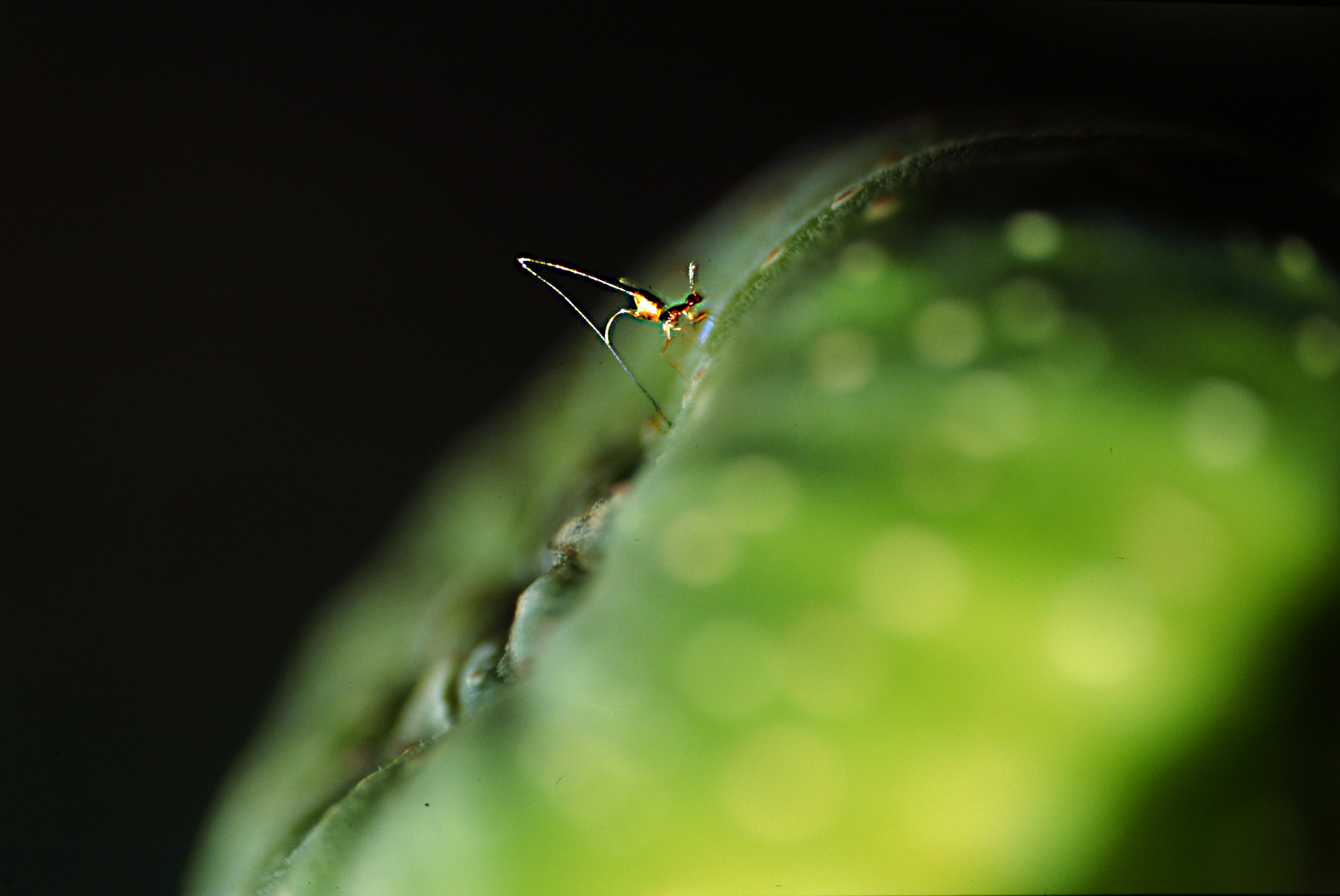Cooperation
Between Species - Mutualism

 Explaining mutualistic cooperation between
species remains one of
the greatest problems for evolutionary biology. Given selfish
interests,
even at the level of the gene, why an individual help individuals from
another species? Leading explanations for such cooperation can be
broadly
grouped into two categories: (a) shared interest; (b) there is some
mechanism
for repressing compeition.
Explaining mutualistic cooperation between
species remains one of
the greatest problems for evolutionary biology. Given selfish
interests,
even at the level of the gene, why an individual help individuals from
another species? Leading explanations for such cooperation can be
broadly
grouped into two categories: (a) shared interest; (b) there is some
mechanism
for repressing compeition.
Our main findings include:
- Cooperation
can be stabilised when individuals preferentially reward partners who
cooperate or punish partners that do not cooperate. This process,
termed sanctions, is analogous to the policing that occurs in social
insects. It may be
particularly important in stabilising mutualisms because it can work in
the conditions where cooperation is hardest to explain - e.g. multiple
symbiont lineages per host with horizontal trnamission (West et al.
2002 Proc. Roy. Soc., 2002 J. Evol. Biol.).
- Sanctions occur in the legume-rhizobia mutualism.
Soybeans penalise rhizobia that fail to fix Nitrogen inside their root
nodules. The mechanism appears to be done by decreased Oxygen supply,
and results in huge fitness costs to the rhizobia (Kiers et al. 2003 Nature).
- Mutualism stability can be aided by the dominance
of one partner, especially if it provides resources and has a direct
self interest in the reproduction of both partners (West & Herre
1994 Proc. Roy. Soc.)
This work involved collaboration with Toby
Kiers (Amsterdam) & Ford Denison at
UC Davis, California (Theory & Legume-Rhizobia), and Allen
Herre at Smithsonian Tropical Research Institute (Figs & Fig
Wasps; above photos provided by George Weiblen).
Related Publications
- West, S.A., Griffin, A.S., Gardner, A. & Diggle, S.P.
(2006) Social evolution theory for
microbes. Nature Reviews Microbiology 4, 597-607.
- Kiers, E.T., Rousseau, R.A., West, S.A. & Denison, R.F.
(2003) Host sanctions and the legume-rhizobia mutualism. Nature,
425, 78-81. {PDF} {Media}
- West, S.A., Kiers, E.T., Pen, I. & Denison, R.F. (2002)
Sanctions and mutualism stability: when should less beneficial
mutualists be tolerated? Journal of Evolutionary Biology, 15,
830-837. {PDF}
- West, S.A., Kiers, E.T., Simms, E.L. & Denison, R.F. (2002)
Sanctions and mutualism stability: why do rhizobia fix Nitrogen? Proceedings
of the Royal Society London Series B, 269, 685-694. {PDF}
- Kiers, E.T., West, S.A. & Denison, R.F. (2002) Mediating
mutualisms: Farm management practises and evolutionary changes in
symbiont cooperation. Journal of Applied Ecology, 39, 745-754. {PDF}
- Weiblen, G.D., Yu, D.W. & West, S.A. (2001) Pollination and
parasitism in functionally dioecious figs. Proceedings of the Royal
Society London Series B. 268, 651-659. {PDF}
- Herre, E.A. & West, S.A. (1997) Conflict of interest in a
mutualism: documenting the elusive fig wasp/seed trade-off. Proceedings
of the Royal Society London Series B, 264, 1501-1507. {PDF}
- West, S.A., Herre, E.A., Windsor, D.W. & Green,
P.R.S. (1996) The ecology and evolution of the New World
non-pollinating fig wasp communities. Journal of Biogeography,
23, 447-458.
- West, S.A. & Herre, E.A. (1994) The ecology of the New World
fig-parasitising wasps Idarnes and implications for the evolution of
the fig-pollinator mutualism. Proceedings of the Royal Society
London Series B, 258, 67-72. {PDF}

 Soybeans sanction rhizobia that do not fix
Nitrogen, leading to a 50% fitness cost to rhizobia that do not
cooperate. LEFT: Split root
experiments. Right:
Measurements on single nodules. See Kiers et al. (2003 Nature)
for further details. Photos kindly provided by Toby Kiers & Ford Denison.
Soybeans sanction rhizobia that do not fix
Nitrogen, leading to a 50% fitness cost to rhizobia that do not
cooperate. LEFT: Split root
experiments. Right:
Measurements on single nodules. See Kiers et al. (2003 Nature)
for further details. Photos kindly provided by Toby Kiers & Ford Denison.
BACK TO SOCIAL
EVOLUTION PAGE BACK TO WEST
GROUP HOME
PAGE

 Explaining mutualistic cooperation between
species remains one of
the greatest problems for evolutionary biology. Given selfish
interests,
even at the level of the gene, why an individual help individuals from
another species? Leading explanations for such cooperation can be
broadly
grouped into two categories: (a) shared interest; (b) there is some
mechanism
for repressing compeition.
Explaining mutualistic cooperation between
species remains one of
the greatest problems for evolutionary biology. Given selfish
interests,
even at the level of the gene, why an individual help individuals from
another species? Leading explanations for such cooperation can be
broadly
grouped into two categories: (a) shared interest; (b) there is some
mechanism
for repressing compeition.
 Soybeans sanction rhizobia that do not fix
Nitrogen, leading to a 50% fitness cost to rhizobia that do not
cooperate. LEFT: Split root
experiments. Right:
Measurements on single nodules. See Kiers et al. (2003 Nature)
for further details. Photos kindly provided by Toby Kiers & Ford Denison.
Soybeans sanction rhizobia that do not fix
Nitrogen, leading to a 50% fitness cost to rhizobia that do not
cooperate. LEFT: Split root
experiments. Right:
Measurements on single nodules. See Kiers et al. (2003 Nature)
for further details. Photos kindly provided by Toby Kiers & Ford Denison.